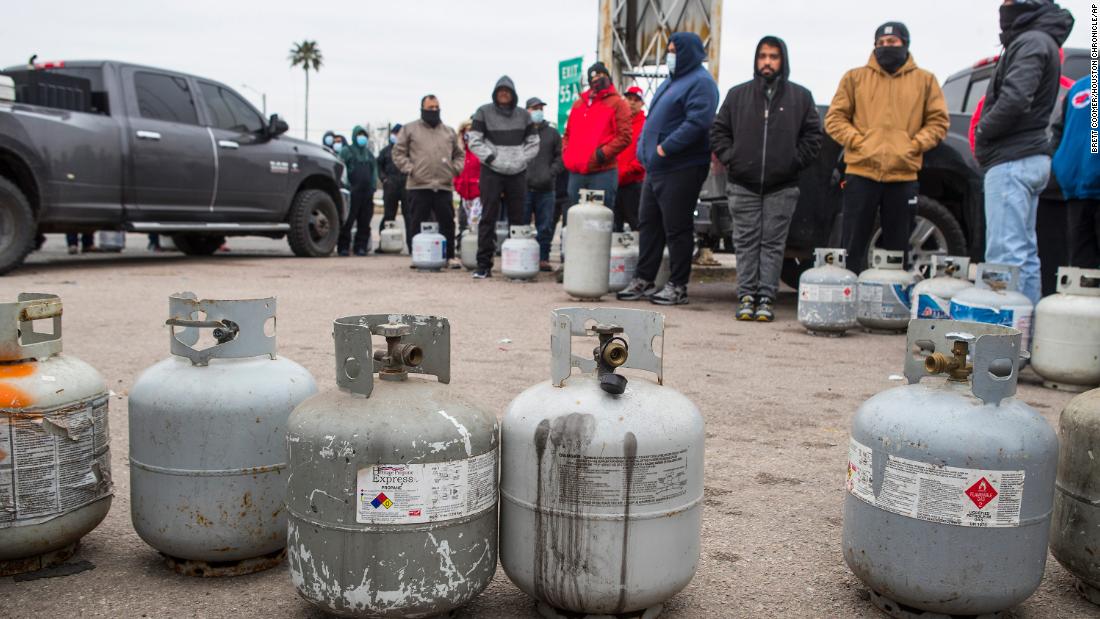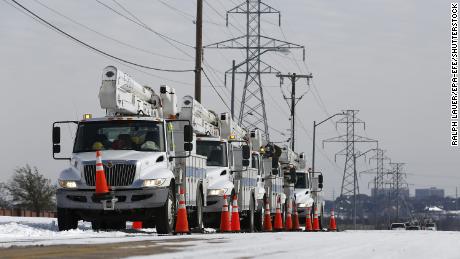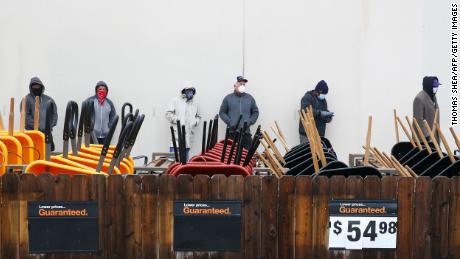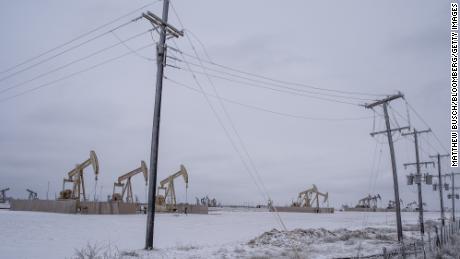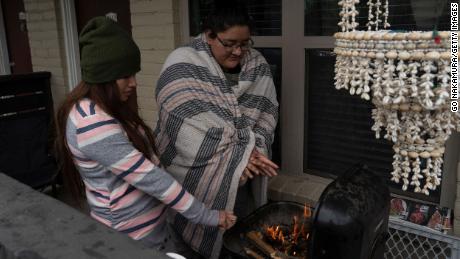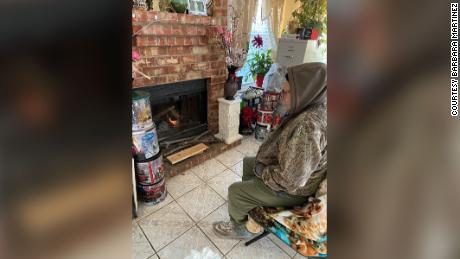Texas shivers as furious officials call for answers over outages
Barbara Martinez said she had been burning firewood to try to heat her suburban Houston home, which had been without power from early Sunday until Tuesday.
“We got power for four hours and then it went off again and it stayed off for a few hours, came back for like two hours then went away,” she said Wednesday morning. “It’s currently off.”
Texas officials pointed the blame at the power company and called for investigations. But ERCOT CEO Bill Magness said the issue largely was a lack of energy supply as the cold weather shuttered power facilities. ERCOT’s controlled power outages, he said, had in fact averted the system’s collapse.
“If we had waited, and not done outages, not reduced demand to reflect what was going on, on the overall system, we could have drifted towards a blackout,” he said. “People feel like what we’re seeing feels like a blackout, but the blackout that can occur if you don’t keep the supply and demand in balance could last months.”
The power issues are likely to continue, especially given that the cold temperatures will last for another day or two. Over 21 million people, or nearly 70% of Texas’s population, are currently under some sort of winter weather alert.
The controlled outages have created rotating power issues as ERCOT has tried to spread around the pain, pushing people to rely on warming centers or the kindness of neighbors.
“We have power for about 30 or 15 minutes and then we get a blackout for about five to six hours,” said Eder Lemus of San Antonio.
The pipes in his house froze, so he, his wife and three children are relying on others for water.
“As of now, we are using a neighbor’s faucet to refill a bucket of water to drain our toilets,” he told said. “When and if the lights come back on, we try to take showers and refill our drinking water gallons so that we can stay hydrated.”
Why the system is failing
When asked on Wednesday why ERCOT hasn’t mandated more winterization to prevent outages, ERCOT’s senior director of system operations Dan Woodfin said it was not required.
“I guess the role of ERCOT is not necessarily to mandate those kind of things,” he said.
Woodfin said the company’s annual spot checks to ensure generators are following best practice winterization plans were done virtually this year due to the pandemic.
“When it comes to electricity, what happens in Texas stays in Texas,” said Dan Cohan, associate professor of environmental engineering at Rice University. “That has really come back to bite us.”
And with temperatures not expected to rise above freezing until Friday, officials worry about how residents will cope without utilities. “I share the frustration of every Texan regarding the loss of power during this winter storm. Millions of people without power during this arctic blast is life-threatening and unacceptable,” Lt. Gov. Dan Patrick said.
When asked if leadership of ERCOT should resign, Gov. Greg Abbott said the company had failed.
“They showed that they were not reliable,” Abbott said. “These are experts. These are engineers in the power industry. Government has to rely upon on these specialists to be able to deliver in these types of situations.”
The Federal Emergency Management Agency is preparing to begin distributing 60 generators, millions of liters of water and tens of thousands of blankets in Texas, according to a FEMA source. More shipments are expected in the coming days and weeks.
Weathering the storm without power, heat or water
Meanwhile, many Texans are pinning their hopes of staying warm on backup generators and warming centers. Some people have turned to unconventional heat sources such as stoves, grills or gas generators — which raises the risk of carbon monoxide poisoning.
Houston officials said Tuesday a woman and girl died from carbon monoxide poisoning after trying to stay warm using a car in a garage.
Water issues have also become widespread as pipes have frozen and power outages hampered water treatment plants. The mayor of Waco urged residents to conserve water after the city’s two plants had issues, and McMurry University in Abilene allowed campus residents to use water from the campus swimming pool to flush their toilets.
Sandra Erickson said her home in Friendswood, just outside of Houston, got so cold that the pipes burst, causing the ceiling in three different rooms to collapse.
“This is like a hurricane catastrophe,” she told CNN.
San Antonio Fire Department confirmed to CNN that the power outages and cold weather were affecting their ability to put out fires. Fire Department spokesperson Joseph Arrington said that firefighters had to change tactics when responding to a fire at an apartment complex early Wednesday.
“Our normal attack would involve multiple hoses and lots of water on the fire, so we’ve obviously just had to adjust,” he said.
CNN’s Keith Allen, Dave Alsup, Alisha Ebrahimji, Matt Egan, Carma Hassan, Dave Hennen, Gregory Lemos, Allison Morrow, Paul P. Murphy, Jessica Myers, Andy Rose and Joe Sutton contributed to this report.
![]()


